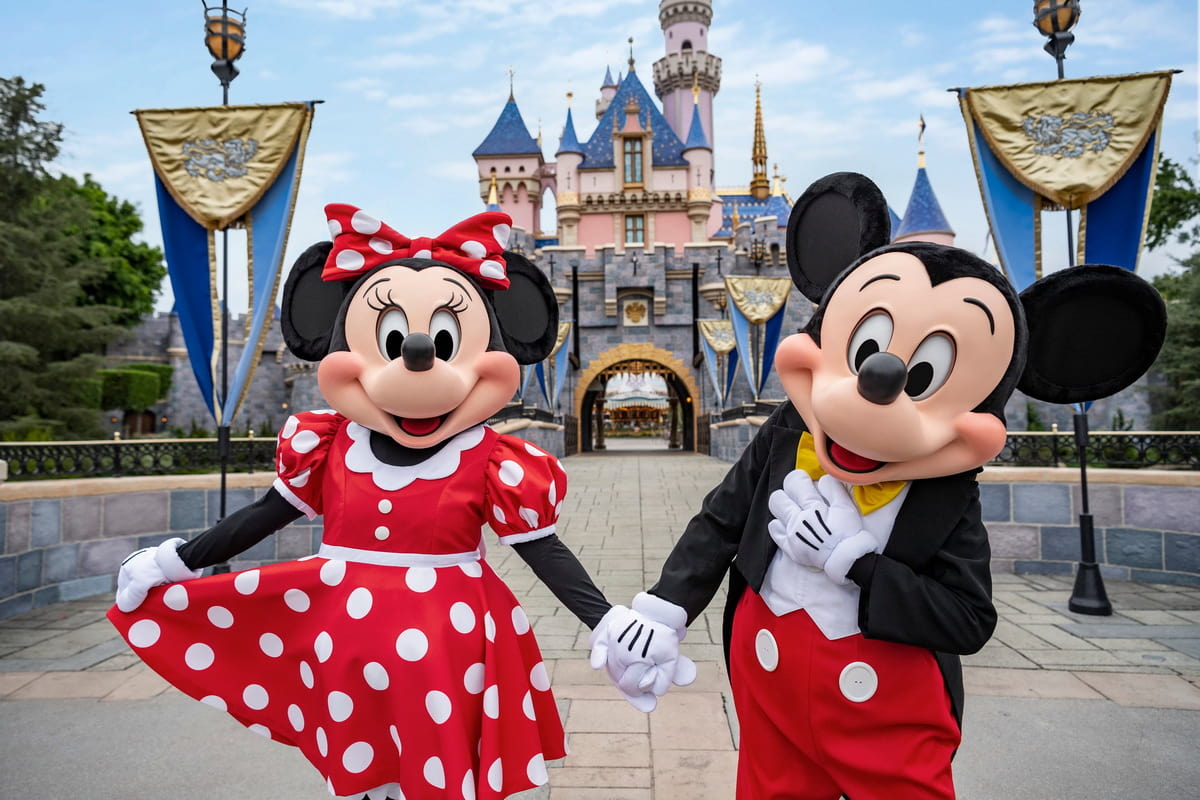Imagine a place where magic is real, where fairy tales come to life, and every corner promises a new adventure. Welcome to Disneyland in California, the original enchanted kingdom founded by Walt Disney.
Opened on July 17, 1955, this legendary theme park has since become a beacon of childhood wonder and innovation, attracting millions of visitors each year. From its iconic Sleeping Beauty Castle to the thrilling Pirates of the Caribbean, each attraction holds a story, steeped in history and imagination.
Let’s uncover 25 fun facts about Disneyland in California, revealing the magic behind the happiest place on Earth.
1. Walt Disney’s Original Vision for Disneyland in California
Walt Disney’s dream of Disneyland in California was a game-changer in the world of entertainment. Conceived in the early 1950s and opening its gates on July 17, 1955, Disney’s vision was a clean, immersive theme park where families could enjoy their time together. Unlike the chaotic amusement parks of the era, Disneyland in California was meticulously planned, blending fantasy and history across different lands.
It’s fascinating that Disney borrowed heavily against his own life insurance to fund this dream, showcasing his dedication and belief in this groundbreaking project.
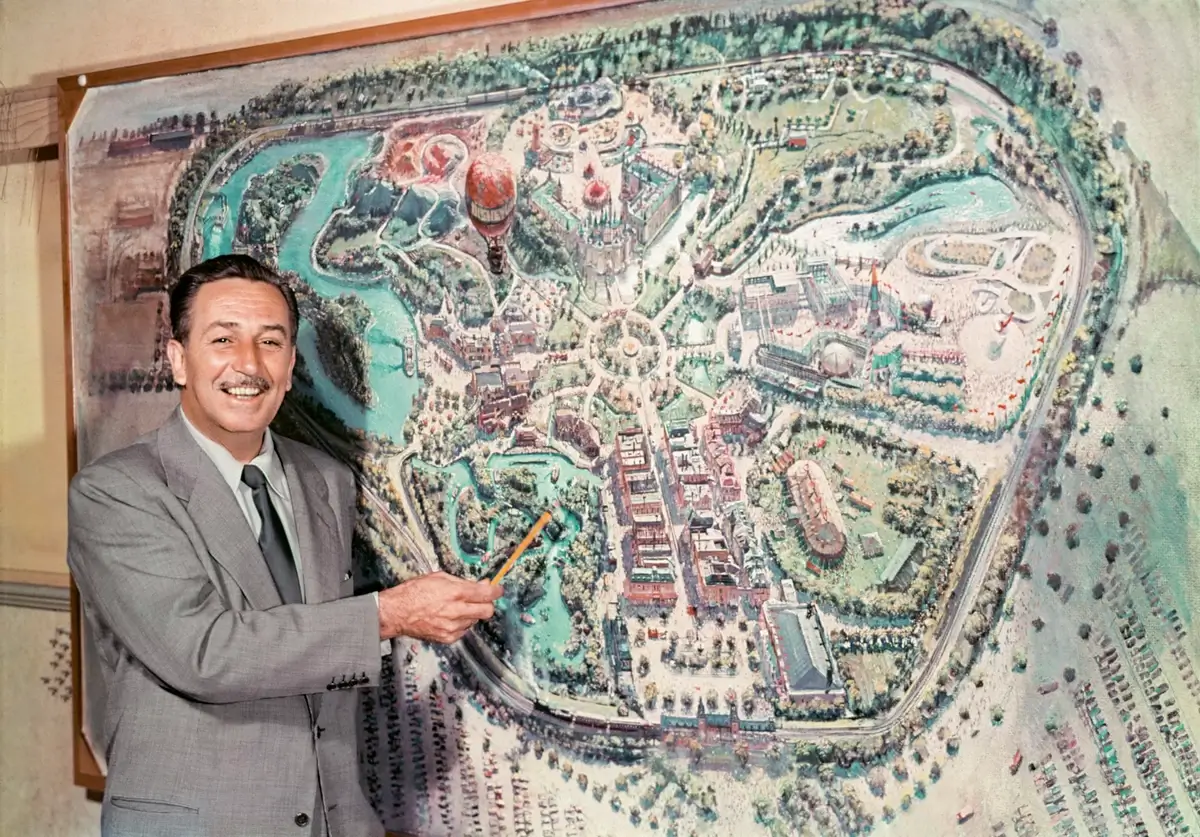
Image: thesun.co.uk
2. The Origin of Disneyland’s Main Street, U.S.A. in California
Main Street, U.S.A. at Disneyland California is more than a mere entrance; it’s a time capsule of Americana inspired by Walt Disney’s childhood memories of Marceline, Missouri. Opened in 1955, this iconic thoroughfare was designed to evoke the charm of a small American town at the turn of the 20th century.
Its architecture and attractions, like the quaint Cinema, showcase early 1900s styles. It’s a tribute to an idealized version of America, filled with nostalgia and a sense of infinite possibility.
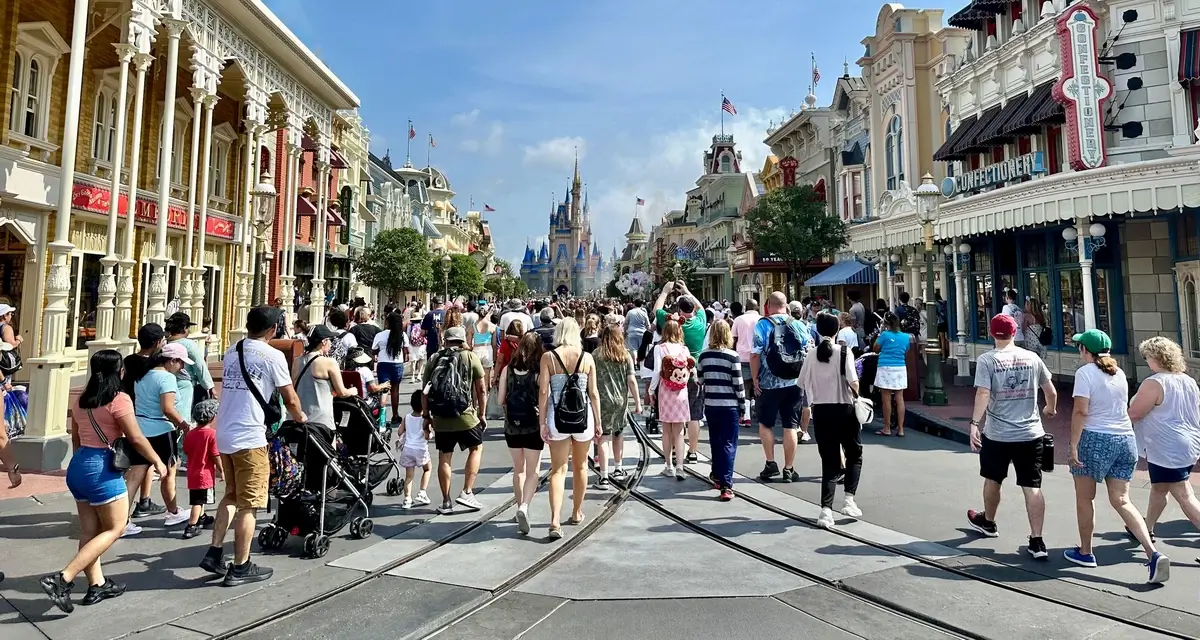
Image: wdwvacationtips.com
3. Hidden Mickeys: A Secret Disneyland California Feature
The Hidden Mickeys scattered throughout Disneyland California offer a unique interactive experience. Introduced as an inside joke by Imagineers, these subtle shapes of Mickey Mouse have become a beloved part of the park’s culture. From the formation of rocks in Fantasyland to patterns in wallpaper, these Mickeys offer a delightful scavenger hunt for observant guests.
The first reported Hidden Mickey appeared in the late 1970s, turning into a park-wide phenomenon that continues to captivate visitors today.
4. Disneyland California’s Opening Day Broadcast: A TV Milestone
The opening day of Disneyland in California on July 17, 1955, was a landmark event in television history, reaching approximately 90 million viewers via ABC. Despite numerous challenges, including technical difficulties and overcrowding, this live broadcast successfully showcased the wonders of Disneyland to a national audience.
Hosted by celebrities like Art Linkletter and Ronald Reagan, the event has since become a legendary chapter in the park’s history, highlighting the enormous public interest and the beginning of a new era in theme park entertainment.
5. The Unique Smells of Disneyland California
Disneyland in California skillfully uses scents to enhance the immersive experience. Specific aromas are strategically placed around the park to evoke emotions and memories, such as the smell of vanilla on Main Street and the briny sea air in Pirates of the Caribbean. This sensory detail adds another layer to the already richly detailed environment, making the Disneyland experience truly multi-sensory.
This technique, pioneered in the 1980s, has been so successful that it’s been adopted by other theme parks worldwide.
6. Disneyland’s Cats: The Nighttime Patrol
Disneyland California is not just home to beloved characters; it also hosts a lesser-known group of residents – feral cats. These nighttime prowlers play a crucial role in controlling the rodent population.
The tradition dates back to the early days of the park when cats were discovered living in Sleeping Beauty Castle. Disneyland has since embraced these feline friends, providing them with care, including feeding stations and medical attention.
This natural pest control method is a unique and eco-friendly aspect of the park’s management.

Image: inspiremore.com
7. The Evolution of Disneyland’s Ticketing System
Disneyland California’s ticketing system has undergone significant changes since the park’s opening in 1955. Initially, Disneyland used a pay-per-ride model with tickets categorized from A to E, with E-tickets for the most popular attractions. This system was phased out in 1982, transitioning to a single admission price for unlimited access to all attractions.
The evolution of Disneyland’s ticketing reflects changes in theme park economics and guest expectations, offering insights into the park’s adaptability and commitment to enhancing visitor experience.

David Lofink / Flickr
8. Disneyland During Construction: A Historical Perspective
The construction of Disneyland California was an ambitious project marked by innovation and speed. Breaking ground in July 1954, the park was completed in just one year, a feat unheard of at the time for a project of its scale. The total cost was $17 million, a substantial investment in the 1950s.
Rare photographs from this period showcase the transformation of an orange grove in Anaheim into the world’s first theme park, a testament to Walt Disney’s vision and determination.
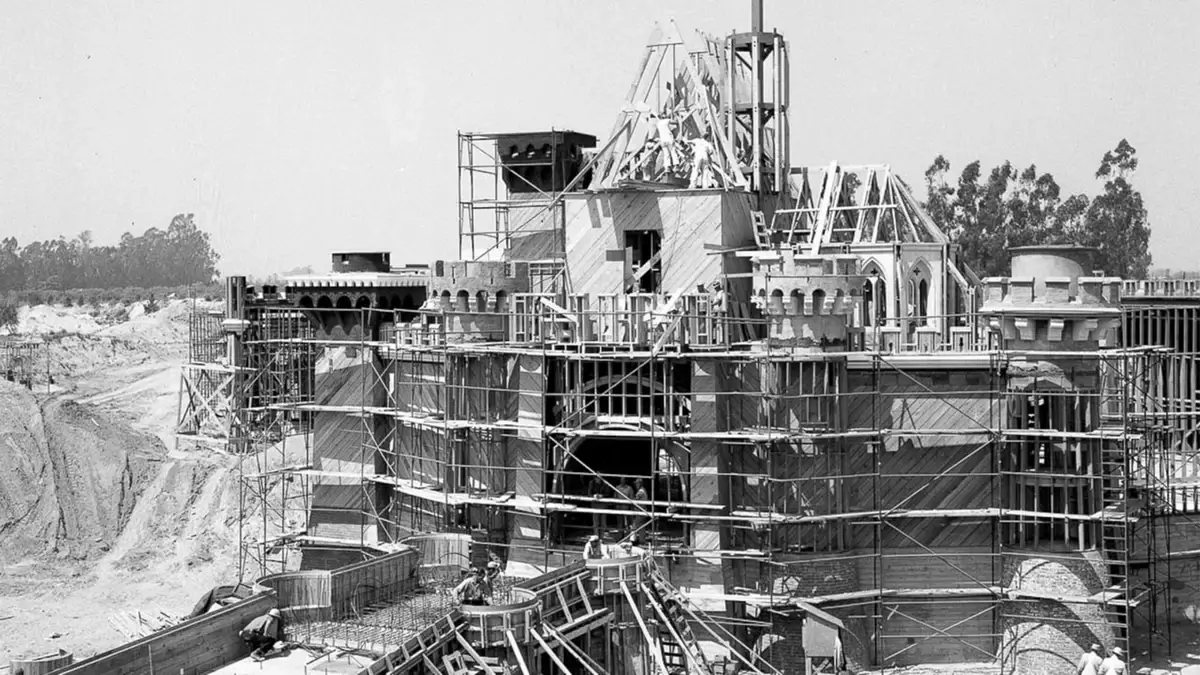
Image: ABC7 News
9. The Disneyland Railroad’s Authentic Steam Engines
The Disneyland Railroad, an integral part of the California park since its opening, features authentic steam-powered locomotives. These engines, some dating back to the 19th century, were meticulously restored and modified for park use.
The railroad not only offers scenic rides around the park but also serves as a moving tribute to America’s railway history. Walt Disney’s personal love for trains was a driving force behind this attraction, making it a blend of historical preservation and entertainment.
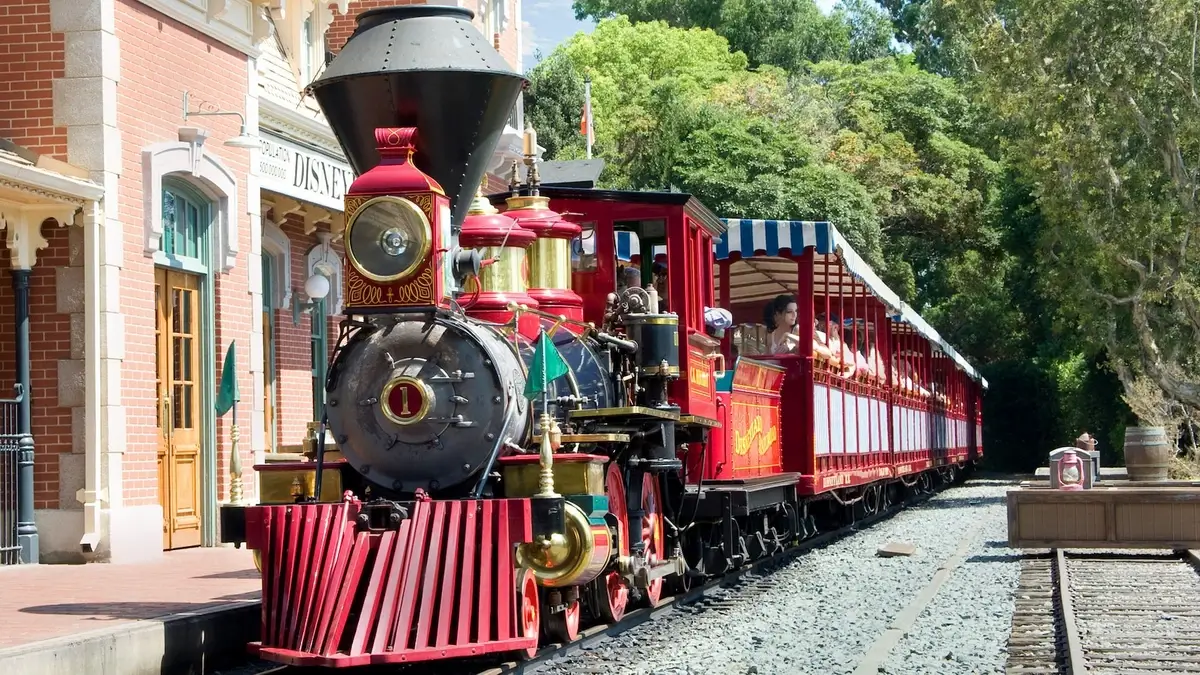
Image: parksavers.com
10. Innovative Landscaping Techniques at Disneyland
Disneyland California’s landscaping is a marvel of design and innovation. The park introduced revolutionary concepts like “forced perspective” to make structures appear larger and more impressive. Over 800 species of plants are used to create thematic landscapes, adapting to the varied microclimates within the park.
Disneyland’s landscaping team meticulously plans and maintains these environments, ensuring that the flora contributes to the storytelling and ambiance of each land, from the jungles of Adventureland to the futuristic setting of Tomorrowland.
11. The Influence of Disneyland on Global Theme Parks
Disneyland in California set a new standard for theme parks globally with its opening in 1955. Its concept of a themed, immersive experience revolutionized the amusement park industry. Disneyland’s success inspired the creation of Disney parks worldwide and influenced countless other theme parks in its design, attention to detail, and customer service.
The park’s innovative approach to theming, storytelling, and experience design has been emulated by theme parks around the world, making Disneyland California a pioneering model in the entertainment industry.
12. Secret Tunnels Under Disneyland
Beneath the bustling streets of Disneyland California lies a network of utilitarian corridors known as the Utilidors. These underground tunnels, not accessible to the public, allow staff (cast members) and service personnel to move around the park out of sight, maintaining the illusion of a seamless magical world above.
The Utilidors include break rooms, control rooms, and service areas, essential for the park’s operations. This hidden infrastructure is a testament to the innovative planning and operational excellence behind Disneyland’s magical experience.
13. Disneyland’s First-Ever Visitor and His Annual Tradition
The first official visitor to Disneyland California was a college student named Dave MacPherson, who bought the first ticket on July 18, 1955, the day after the televised opening. As the first paying guest, he was awarded a lifetime pass to Disneyland. This started an annual tradition for MacPherson, who visited the park every year.
His story highlights the lasting appeal and personal connections many guests have with Disneyland, becoming a charming piece of the park’s history.
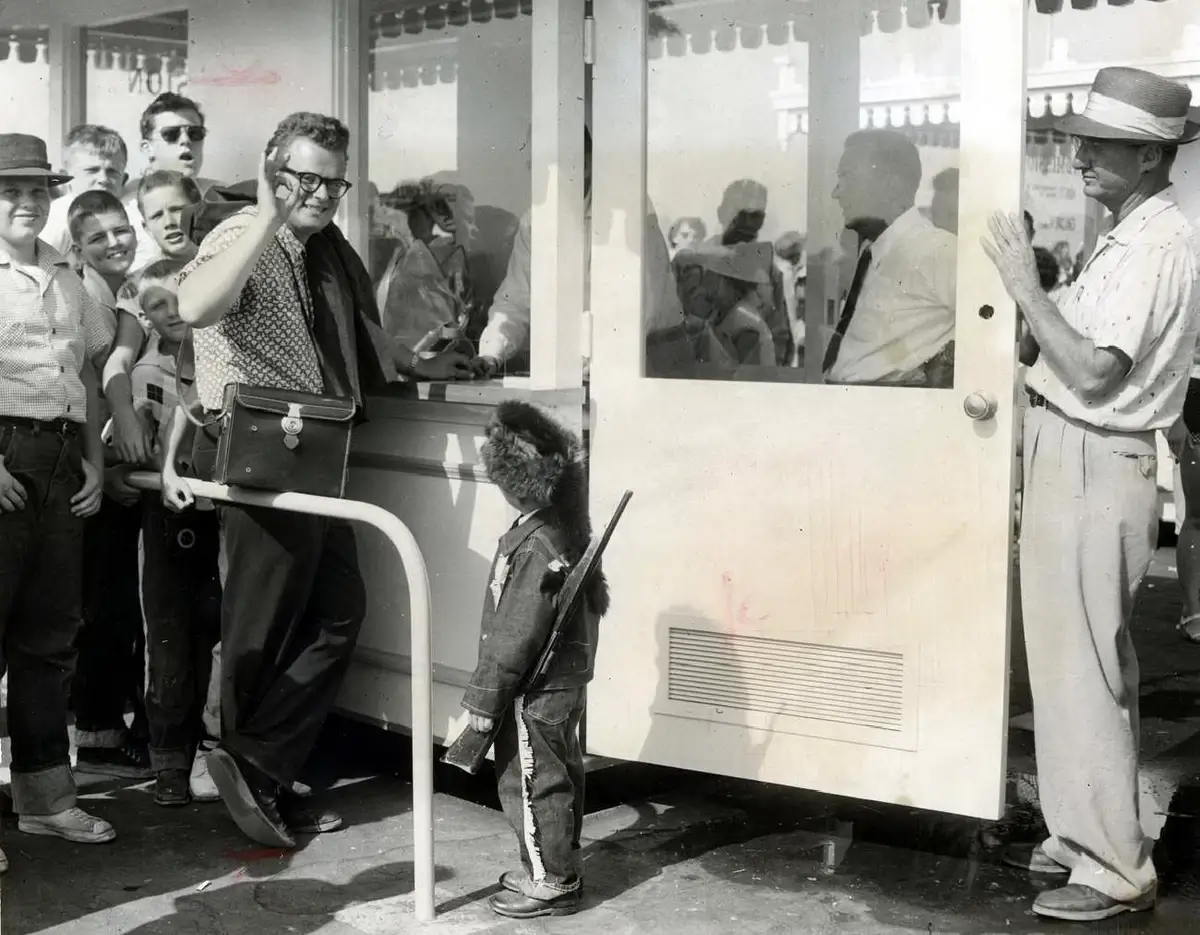
Dave McPherson, first paying customer to Disneyland. Image: tricurioso.com
14. Club 33: Disneyland’s Exclusive Membership Club
Club 33, located in New Orleans Square of Disneyland California, is an exclusive private club opened in 1967. Initially intended as a haven for corporate sponsors and VIPs, it has since become known for its elite membership and luxurious amenities. The club offers fine dining, a jazz lounge, and a unique view of the park.
With a lengthy waiting list and a hefty membership fee, Club 33 remains one of the most exclusive and secretive parts of Disneyland, steeped in mystique and allure.
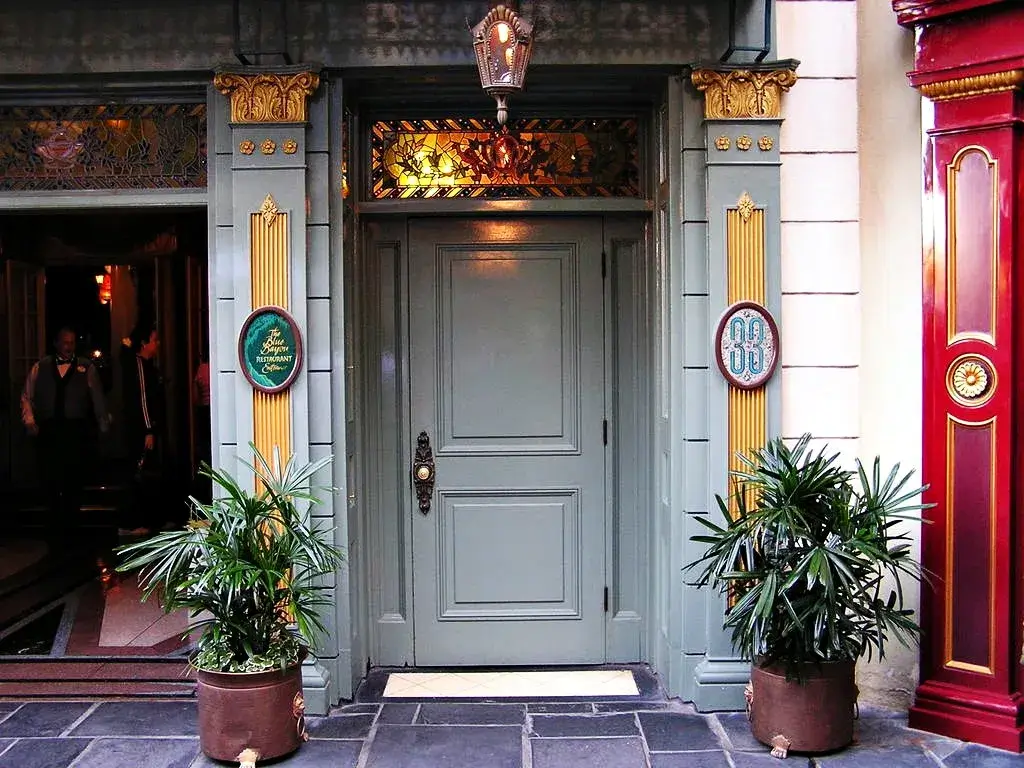
Image: thesun.co.uk
15. The Transformation of Disneyland’s Castle Over the Years
Sleeping Beauty Castle, the iconic centerpiece of Disneyland California, has undergone several transformations since the park’s opening. Originally designed to resemble a medieval European castle, it has been repainted and redecorated multiple times to reflect different celebrations and anniversaries. Notably, for Disneyland’s 50th and 60th anniversaries, the castle was adorned with dazzling decorations and enhancements.
These transformations reflect the park’s evolution and its commitment to keeping the magic alive for each generation of visitors.
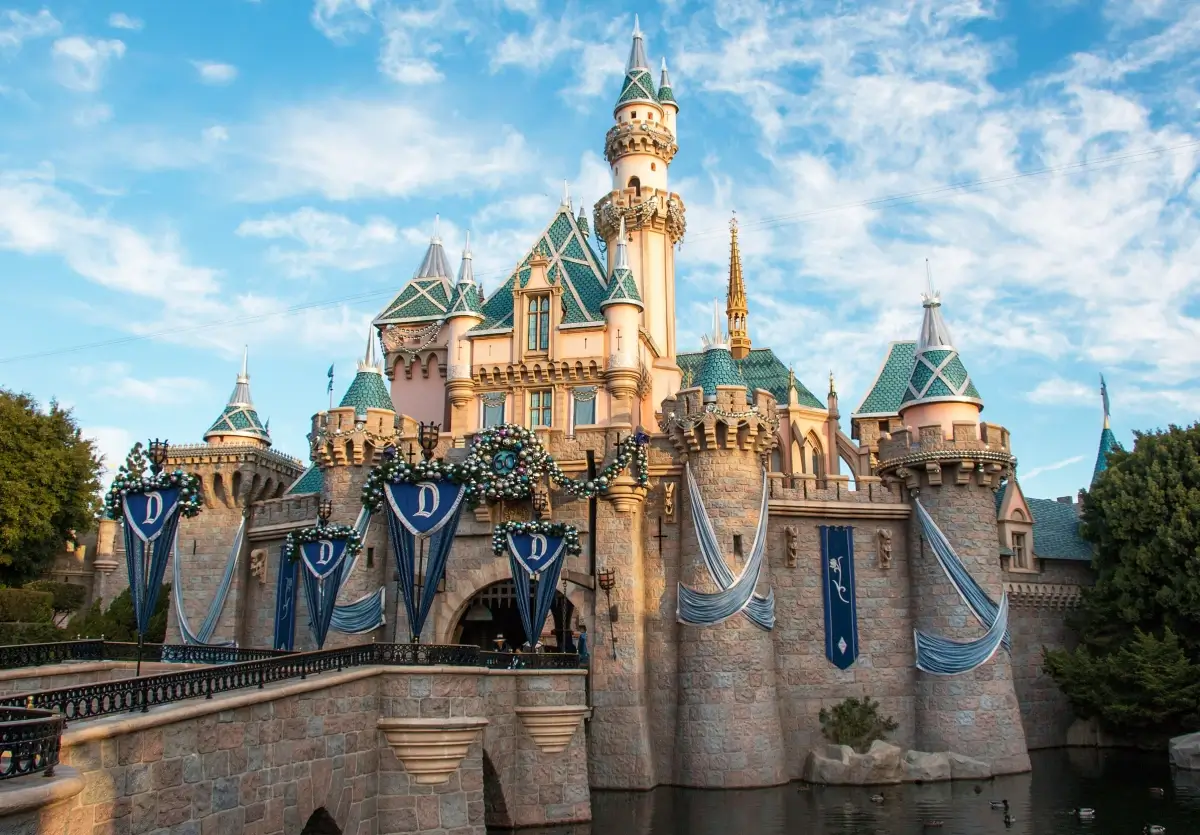
Image: waltsdisneyland.wordpress.com
16. The Annual Passholder Phenomenon at Disneyland
The introduction of the Annual Passholder program at Disneyland California transformed the park’s relationship with its most loyal visitors. Launched in 1984, this program allowed frequent guests to enjoy the park multiple times a year for a fixed fee. It created a dedicated community of Disney enthusiasts, some of whom visit the park dozens of times annually.
The program also influenced visitor spending and park attendance patterns, leading to similar programs in theme parks worldwide. It’s a testament to the enduring appeal of Disneyland and its ability to foster a passionate fan base.
17. Disneyland’s Role in Popularizing Theme Park Foods
Disneyland California has been a trendsetter in making food an integral part of the theme park experience. From the introduction of unique treats like the famous Dole Whip to the immersive dining experiences in themed restaurants, Disneyland has elevated theme park food beyond traditional fare.
Their innovative approach to culinary offerings has been replicated by theme parks around the globe, making dining a significant aspect of the visitor experience. Disneyland’s focus on themed, quality food options reflects its commitment to an all-encompassing, immersive guest experience.
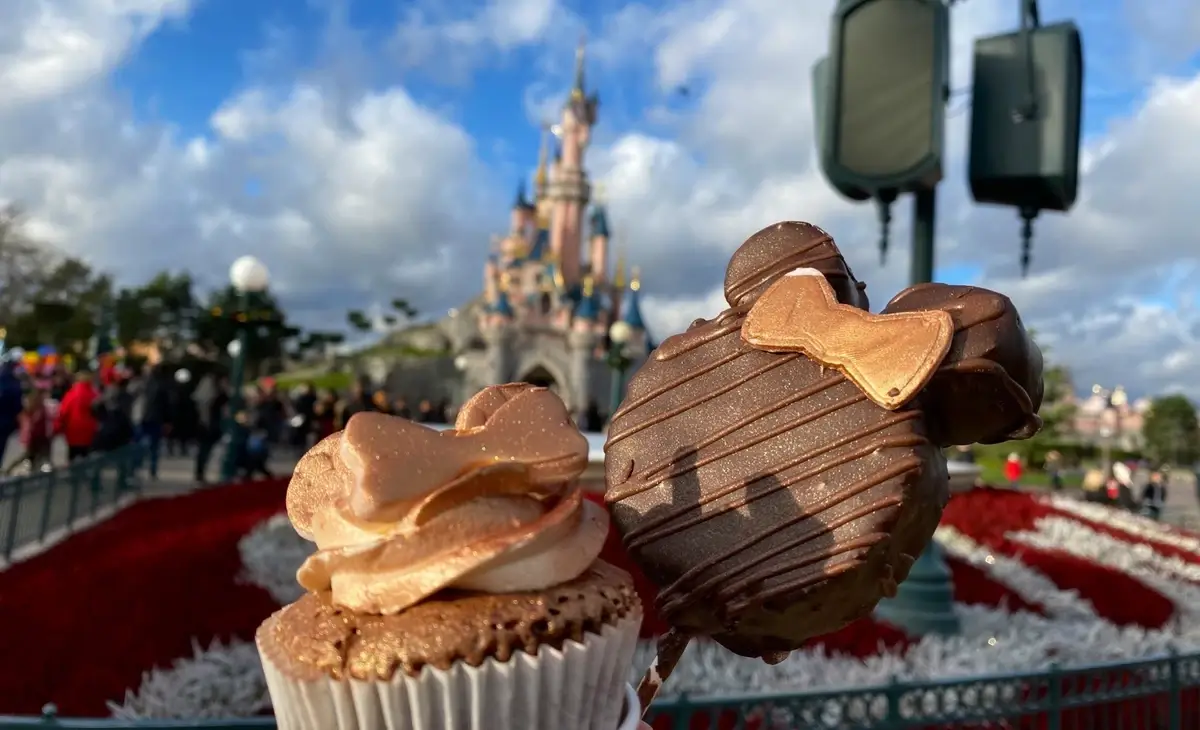
Image: dlpreport.com
18. The Importance of Color Psychology in Disneyland Design
Color psychology plays a crucial role in the design and theming of Disneyland California. Each area of the park uses color strategically to create mood, direct attention, and enhance storytelling. For instance, Main Street, U.S.A., employs warm hues to evoke nostalgia, while Tomorrowland uses cooler tones to convey a futuristic feel.
The careful selection of colors is part of Disney’s meticulous attention to detail, ensuring that every visual element contributes to the immersive experience of the park.
19. Disneyland’s Influence on Popular Culture
Disneyland California has had a profound impact on popular culture since its inception. It has been featured in movies, TV shows, and music, becoming synonymous with the idea of magical, family-friendly entertainment. The park has also influenced the design and operation of theme parks worldwide.
Disneyland’s characters, imagery, and themes have become deeply ingrained in the global cultural lexicon, showcasing its far-reaching influence beyond just the realm of theme parks.
20. Sustainability Efforts and Environmental Practices at Disneyland
Disneyland California has increasingly focused on sustainability and environmentally friendly practices. The park has implemented measures such as energy-efficient lighting, solar panels, and water conservation systems. Disneyland also participates in waste reduction and recycling programs, aiming to minimize its environmental footprint.
These initiatives are part of Disney’s broader commitment to sustainability, reflecting a growing trend in the theme park industry towards environmentally responsible operations.
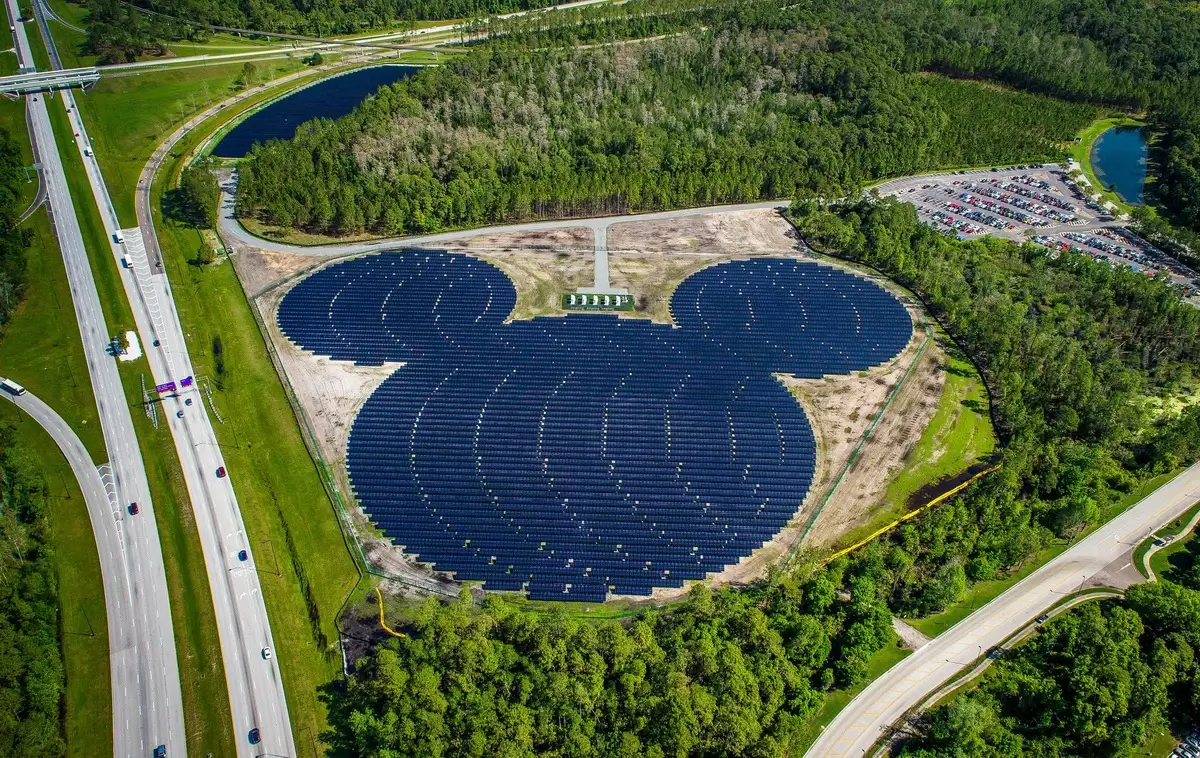
Image: cleanenergy.org
21. Technological Innovations Pioneered by Disneyland
Disneyland in California has been a pioneer in theme park technology since its opening in 1955. Innovations like the use of Audio-Animatronics in attractions such as Pirates of the Caribbean and the Haunted Mansion revolutionized the industry. Disneyland also introduced the concept of E-Ticket attractions, representing the most advanced and immersive experiences.
The park’s ongoing commitment to technological advancements, including recent developments in virtual reality and interactive experiences, continues to set the standard for theme parks worldwide.
22. The Role of Disneyland in Community Engagement
Disneyland California plays a significant role in community engagement through various programs and initiatives. The park contributes to local charities, hosts educational programs, and organizes volunteer activities. Disneyland’s involvement in community outreach extends to environmental initiatives and cultural events, positioning the park as more than just a tourist destination but also a valuable community partner.
This commitment to social responsibility demonstrates Disneyland’s dedication to having a positive impact beyond its gates.
23. Famous Celebrities’ Favorite Attractions at Disneyland
Disneyland California has been a popular destination for celebrities since its opening. Many famous personalities have shared their love for specific attractions in the park. For instance, Johnny Depp has expressed his fondness for the Pirates of the Caribbean ride, and Tom Hanks is known to be a fan of the Disneyland Railroad.
These preferences offer a glimpse into the universal appeal of Disneyland, transcending status and age, and contributing to the park’s iconic status in popular culture.
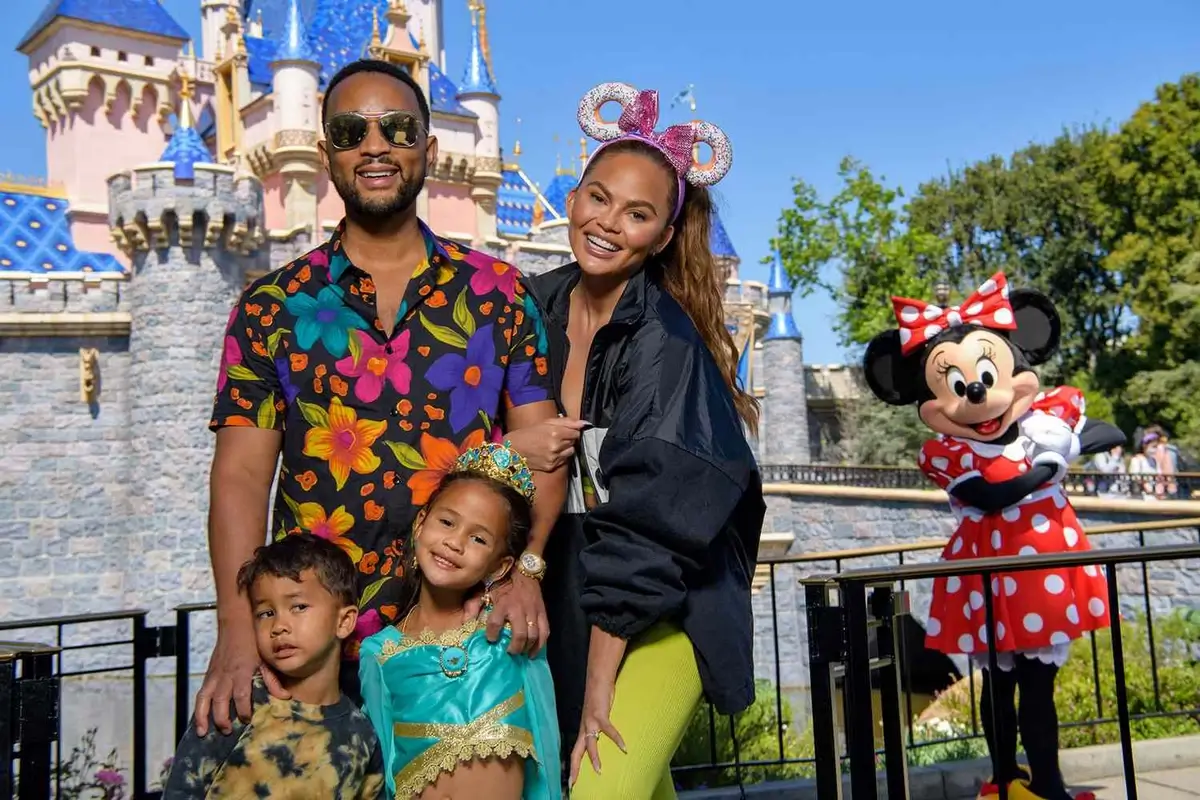
Image: travelandleisure.com
24. Disneyland’s Impact on Local Economy and Tourism
Since its opening, Disneyland in California has had a significant impact on the local economy and tourism. The park attracts millions of visitors annually, contributing substantially to the economy through job creation, tourism spending, and tax revenues. Disneyland’s presence has transformed Anaheim and its surrounding areas, spurring growth in hotels, restaurants, and other tourist-related businesses.
The park’s economic impact is a testament to its role as a major driver of regional economic activity.
25. Cultural Milestones Celebrated at Disneyland
Disneyland California has been a venue for celebrating various cultural milestones and events. From hosting special parades for holidays like Christmas and Halloween to recognizing significant historical events and anniversaries, Disneyland embraces a wide array of cultural celebrations. These events not only enhance the visitor experience but also reflect Disneyland’s commitment to diversity and cultural inclusivity.
The park’s engagement with different cultural milestones contributes to its reputation as a place where everyone can find something to enjoy.
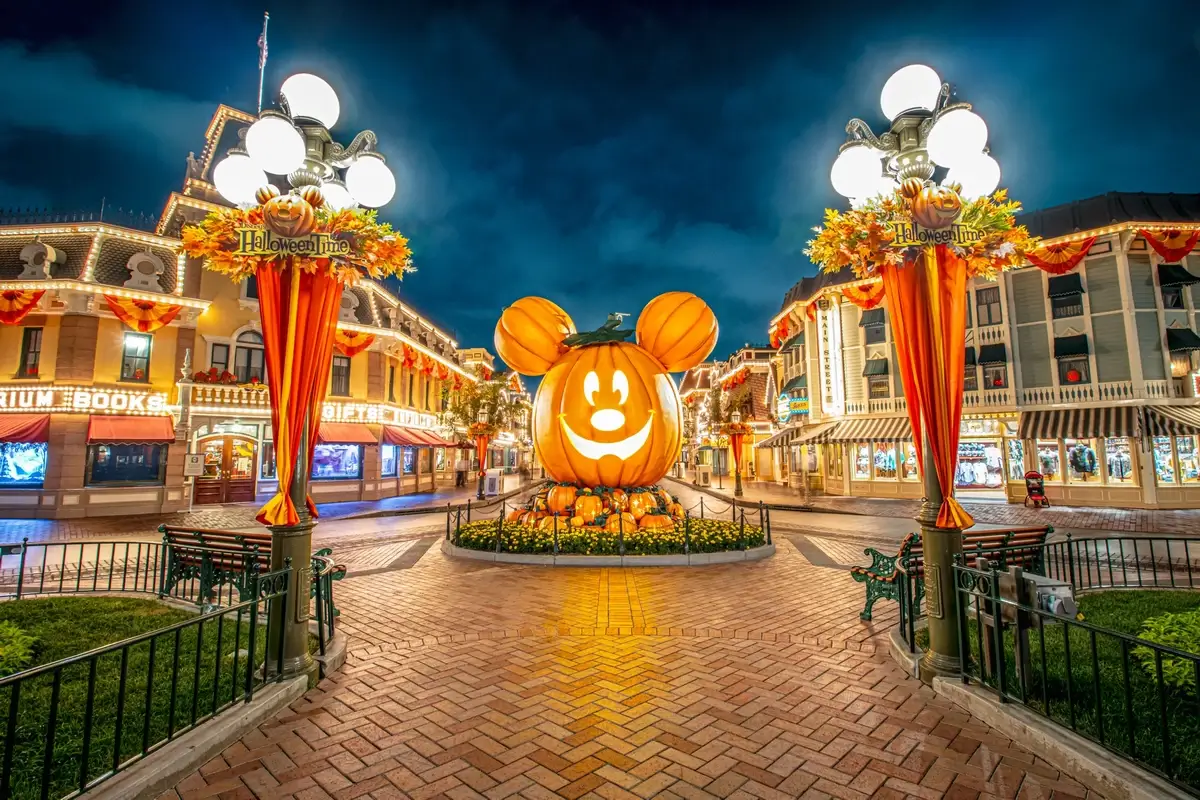
Image: wdw-magazine.com
FAQ
What is Disneyland California famous for?
Disneyland California is renowned for being the original theme park created by Walt Disney himself. It’s famous for its iconic attractions like Sleeping Beauty Castle, Pirates of the Caribbean, and Space Mountain. Known as “The Happiest Place on Earth,” it’s celebrated for its immersive themed lands, beloved characters, and innovative rides. Disneyland has set the standard for theme parks globally, combining storytelling, entertainment, and technological innovation.
How old is Disneyland in California?
Disneyland in California opened on July 17, 1955. As of 2023, it is 68 years old. The park has seen numerous expansions and renovations over the years but has retained its charm and appeal since its opening.
How many rides does Disneyland California have?
Disneyland California had approximately 50 rides. This includes attractions in both Disneyland Park and Disney California Adventure Park. The number of rides can vary with the introduction of new attractions or the retirement of older ones.
Why did they put Disneyland in California?
Disneyland was put in California primarily due to its favorable climate, which allows for year-round operation, and its proximity to Hollywood. Walt Disney chose Anaheim because of its ample space for a large park and its potential for growth. The location was also relatively close to the existing Disney Studios in Burbank, allowing for easy coordination between the park and the studio’s operations.
How many people go to Disneyland a day in California?
The average daily attendance at Disneyland California is estimated to be around 44,000 to 50,000 visitors. This number can vary depending on the time of year, with higher attendance during peak seasons like summer and holidays.
What is California Disneyland called?
The theme park in California is officially called “Disneyland Park.” It is part of the larger Disneyland Resort, which also includes Disney California Adventure Park, Downtown Disney District, and several hotels. Disneyland Park is the original theme park built by Walt Disney and is the only theme park designed and built under his direct supervision.


